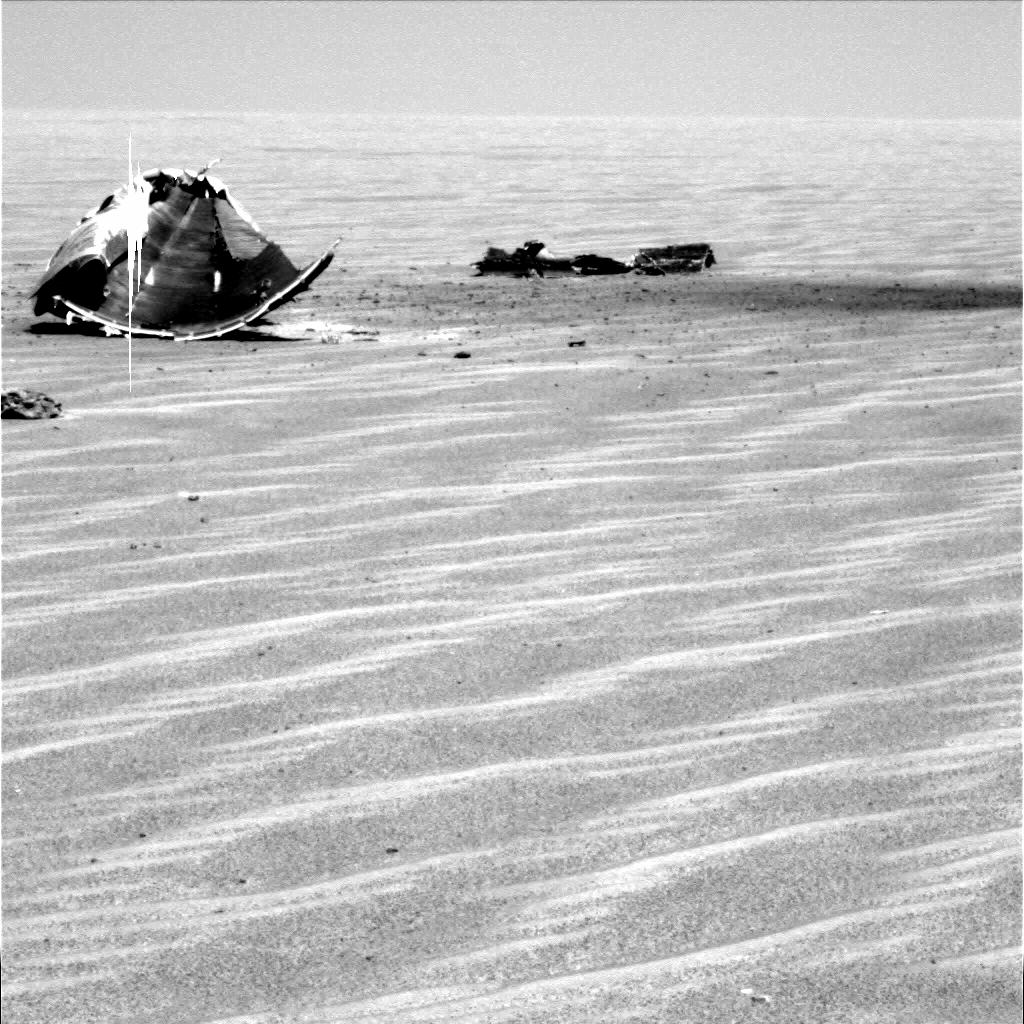Rover Eyes Mangled Hardware on Mars

An unprecedented look at broken and busted hardware on Mars is exciting spacecraft engineers.
NASA's Opportunity rover is edging closer to the very heat shield that protected the Mars machinery as it plowed through the red planet's atmosphere last January.
After six months of rolling about inside Endurance Crater, the Opportunity robot is now traveling across the flatland of its landing area, Meridiani Planum.
Driving out of Endurance Crater, the rover examined some of its own tracks that it had laid down prior to entering the crater. It compared them side-by-side with fresh tracks in order to observe any weathering effects in the intervening 200 sols, or Mars days.
Opportunity is now trekking toward an engineering exam of its heat shield, which is located about 220 yards (200 meters) from the edge of Endurance Crater.
Charring challenged
Checking out the trashed heat shield is of particular interest to Rob Manning, former Entry, Descent and Landing Mission Manager for the Mars Exploration Rover project at the Jet Propulsion Laboratory (JPL) in Pasadena, California.
Get the Space.com Newsletter
Breaking space news, the latest updates on rocket launches, skywatching events and more!
"Based on arc-jet testing and mathematical models, we expect a certain amount of charring of the heat shield material," Manning told SPACE.com.
But Manning said that even the best testing facilities on Earth can only test small samples of the heat shield in approximate Mars-like conditions.
"Ironically, we have never been able to absolutely prove that our models that predict how much charring occurs during a Mars entry are correct. An observation of the cross-section of Opportunity's heat shield material would help us confirm our models," Manning explained.
Close-up pictures
Manning said that by using the Opportunity's microscopic imager on the end of the robotic arm, an attempt will be made to take close-up pictures of broken places on the heat shield where a cross section of the heat shield is visible.
"We will also take pictures of the overall burn patterns on the heat shield. However we will not know until Opportunity gets there if any of these observations are possible," Manning added.
"But if we are successful, this will be the first time we have ever directly seen how well heat shields have worked at Mars," Manning said. "This information might help us design better and more efficient heat shields in the future."
- Rover Special Report
Join our Space Forums to keep talking space on the latest missions, night sky and more! And if you have a news tip, correction or comment, let us know at: community@space.com.

Leonard David is an award-winning space journalist who has been reporting on space activities for more than 50 years. Currently writing as Space.com's Space Insider Columnist among his other projects, Leonard has authored numerous books on space exploration, Mars missions and more, with his latest being "Moon Rush: The New Space Race" published in 2019 by National Geographic. He also wrote "Mars: Our Future on the Red Planet" released in 2016 by National Geographic. Leonard has served as a correspondent for SpaceNews, Scientific American and Aerospace America for the AIAA. He has received many awards, including the first Ordway Award for Sustained Excellence in Spaceflight History in 2015 at the AAS Wernher von Braun Memorial Symposium. You can find out Leonard's latest project at his website and on Twitter.









